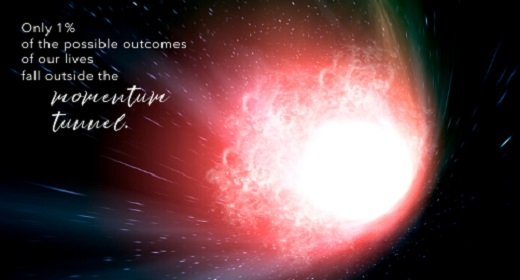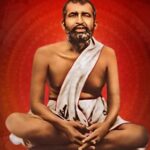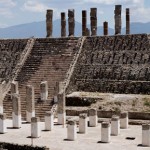By Deepak Chopra: In our prior post we reconstructed the concept of “you”, which we all typically, think of as bounded by the skin and the body it encloses.

But a hallmark of 21st-century science is to tear down boundaries. A limitless universe that springs from the quantum vacuum, (along with possibly multiple universes) is the setting for an unbounded “you” – a self that merges with creation. The bond that unites you with the universe isn’t simply physical, although every atom in your body comes from stardust, much of it the residue of exploding supernovas in intergalactic space. Far more importantly, “you” are a mental construct, and therefore the bond that weaves your life into cosmic life is invisible.
We’ve argued that human intelligence most plausibly arose from an intelligent universe. As the great physicist Erwin Schrödinger declared, “To divide or multiply consciousness is something meaningless.” In other words, consciousness is one. It only appears to be divided up into billions of human minds, and likely into uncountable forms of consciousness in other species. In the same way, you might see an aqua sweater as blue while I see it as green, but “color” itself is a single thing; two people can’t have their own separate definition of it. There’s a telling metaphor in the Vedic tradition: When the sun shines on a perfectly still sea, there is one sun reflecting back. But when the sea is rippled and moving, there are millions of tiny suns shining back. This appearance doesn’t mean that the sun isn’t one. This insight comes very close to an ancient passage from one of the central texts in Indian spirituality, the Yoga Vasistha: “Cosmic consciousness alone exists, now and ever. In it there are no worlds, no created beings. That consciousness reflected in itself appears to be creation.” In short, either consciousness is unbounded or you haven’t looked deep enough.
The reason that Schrödinger felt competent to talk about unbounded consciousness was that physics had finally reached deep enough, to the most fundamental level of nature. In the quantum realm we know for certain that notions of “boundaries” evaporate: the wave functions that describe the locations and boundaries of “particles” extend in all directions to the borders of the universe itself. Eventually the dissolution of boundaries became total. Einstein, who was a conservative in these matters compared to some of the other quantum pioneers, wrote a condolence letter to a friend who had just lost her husband. It contained the following famous passage: “Now he has departed from this strange world a little ahead of me. That means nothing. People like us, who believe in physics, know that the distinction between past, present, and future is only a stubbornly persistent illusion.”
Quantum physics forced us to re-conceive ourselves as creatures who appear to be physical and bounded by time, even though our substance isn’t material and has no boundaries in time. Down further in scale, re-conceiving who we are becomes an ever greater imperative: gluons, quarks, neutrinos, mesons, bosons (including the Higgs boson, the so-called “God particle”) all intimately overlap. The universe – and you – continually bubbles up from these shadowy subatomic entities, each sensing, reflecting, and interacting in a seamless whole. In the nanoseconds when these elusive entities escape their invisible domain, science touches on the same picture painted by the Yoga Vasistha, of a creation born of unseen activity beyond the reach of inner thought and probably beyond the reach of imagination as well. What’s left is mathematics clinging to the edge of the cliff with clutched fingers, hoping not to fall. But mathematics isn’t reality, while consciousness is.
All of us, including scientists, protect our boundaries, finding it hard to join unbounded reality. But if consciousness is real, we don’t have to leap into an alien realm to reach the foundation of creation – it is inside ourselves. The limits of physicality have been reached. This is an area on which there is scientific consensus, thanks to quantum theory: There is a smallest level of scale beneath which one can go no further, at least in this “real” universe of four-dimensional spacetime, known as the Planck scale: 10-35 meters (-1 followed by 35 zeros). Besides defining where physicality ends, the Planck scale also marks the end point of the environment that encloses material things, such as time, space, and the laws of nature. We don’t know for sure what the smallest entities are like. (The five senses don’t help at such an inconceivable scale.) Some think they are the “multidimensional strings” of string theory, but there are other theories as well each sorely lacking in evidence but backed up by various intricate and beautiful mathematical formulations – indeed, the real problem is that there are too many mathematical possibilities that all seem equally valid – or invalid.
Whatever the smallest “stuff” is, it cannot be subdivided into smaller bits and pieces with known locations in time and space. Instead, the universe emerges from the energetic void that is the foundational nature of creation. But even “void” is a tricky term, since the pre-creation state isn’t empty, a pure, empty, vacuum. There are huge amounts of energy linked to vast numbers of virtual particles that potentially manifest an observable reality. Emptiness is spontaneously and continuously giving rise to these tiniest entities, coming and going in a “quantum foam.” Thus, from the smallest level of scale, the universe is not a place, an empty box in which we reside. Creation is a process that brings existence out of non-existence. You are that process. You are seamlessly woven into a reality that is complete, whole, and perfect just as it is. Surprisingly to some but not to all, the subjective experiences found in the Yoga Vasistha and many other ancient texts emphasize the unity of experience. These texts, as it turns out, precisely reflect our objective scientific understanding of how the universe arises.
The usual terms attached to ancient texts (e.g., spiritual, religious, wise, intuitive, enlightened) send up red flags to scientists and their ingrained distrust of subjectivity. So let’s resort to a neutral term that links subject and object: observation. In a reality where artificial boundaries have collapsed, the “in here” of subjectivity is no longer walled off from the “out there” of objectivity. The seamless flow of creation expresses itself in both. An observer-based science can be founded on meditation or the Hubble telescope. In a dualistic framework these are opposite poles. But they come together in an unbounded framework. For a century quantum physics has wrestled with the so-called observer effect as it impinges on isolated waves and particles. It was mind-blowing enough to believe that the process of observation turned waves into particles. But the logical extension is mind-expanding: Everything in the universe depends on the linkage between observer, observed, and the act of observation.
If it is willing to adopt a touch of humility, science will see that ancient contemplative traditions arrived at conclusions that were not duplicated until “objective” methods acquired incredibly advanced, precise tools. The Higgs boson required billions of dollars in machinery, and countless hours of theorizing, in order to pry out a new piece of knowledge about how subatomic particles emerge from the void. The ancient wisdom traditions began with the big picture instead, and their descriptions of the big picture still outstrip ours. The ancient explorers of consciousness understood the nature of the void, encountered not through mathematical calculation but through direct experience. The void revealed itself to be none other than mind, usually written as Mind to signify that it lies beyond our small, personal minds.
Getting contemporary physics to begin with the observer meets a great deal of resistance, but an observer-based science has one great advantage: There is no other way to get where we want to go. Once physicality ends at the Planck scale, something must hold the universe together, and this something can’t be in time or space, nor can it be made of physical “stuff.” We won’t leap to the obvious conclusion: this something sounds an awful lot like God. The word “God” can conjure many different reactions based on different traditions and history. To use a value-neutral word, what this something actually sounds like is reality itself. The skeptics have their chance for rebuttal. If anyone can define reality in non-physical, non-linear terms, freed from all boundaries and yet capable of erecting the incredibly organized cosmos, it’s difficult to imagine how mind isn’t the answer. Otherwise, a timeless agency that can create time, a causeless entity that gave rise to causation, and a source that has no place but created space itself – such an origins story would be inconceivable to us without it being conscious.
And so we finally come to our conclusion. Where time, space, matter, energy, gravity, and mathematics reach their limits, there is the source of creation, and the most plausible candidate is consciousness. Reality is more than existence waiting to be filled with random events. It is existence guided and governed by the qualities of consciousness – intelligence, self-organization, self-awareness, orderliness, evolution, and infinite creativity. What will it take for anything like consensus on this conclusion? The dominant metaphors of our modern culture are those of science and engineering. These metaphors prejudice the contemplation of the question, what is the mind? Materialist ways of thinking posit that the universe is an immense machine that created things like mind and the human brain by randomly tossing the building blocks of atoms and molecules until they happened to land in a pattern instead of scattered across the floor.
In this series of posts we’ve taken you from an automatic acceptance of these dominant, mechanistic metaphors, not to prove that they are wrong but to raise sufficient doubt about their certainty that you can entertain another possibility: Consciousness, or mind, is what the universe arises from and is made of. Mind isn’t just gurgling out of brain cells like water from a spring. It isn’t merely a side effect of the brain’s electrical and chemical activity, like heat from a bonfire. There isn’t logical substantiation that brain = mind, even though the majority of scientists, philosophers, and the public may assume that this is so, since thoughts come out of the brain. Music comes out of a radio, but that doesn’t mean that radio = music.
Radios don’t contain little tiny rock bands or news commentators or symphony orchestras, yet they give rise to rock and roll, commentary, and symphonies. Radios transduce radio waves, which embedded in the infinite electromagnetic field, into specific, understandable auditory signals. Similarly, the brain can be just as readily conceived of as the transducer of infinite Mind into our specific thoughts. And the brain could just as easily be thought of as transducing the quantum field into everything we perceive: matter, energy, time, space, and all perceived sensations. Could Mind have used evolution to arrive at the brain so that we can live as adaptable, interactive beings in a world that perfectly mirrors our conception of it?
In this view, our brains are mind the way every subatomic wave/particle is also mind. This unity solves the problem of deriving brain from mind or vice versa – they are two aspects of the activity of consciousness. The seemingly intractable issues that science faces today, particularly the challenge of consciousness, may actually have a simple answer, as we propose here. There’s no surprise, then, that an fMRI scan can pick up very specific brain activity that corresponds with a person’s emotions, mood, desires, and other aspects of mind. The match is seamless and perfect, as it has to be. Radios don’t get to eliminate the violins from a Mozart symphony; there has to be electrical activity for every aspect of the music. This is where the radio metaphor gets difficult: Can you imagine a functional radio that is itself constructed of radio waves? In a very real sense, a radio, along with the entire universe, is derived from invisible wave functions. So ascribing mind to neurons merely begs the question. No “thing” can give rise to mind. Hard as it may be to accept, “things” were metaphors all along.
As easy as it is to think that the brain in its skull casing is all that is necessary to produce mind, it’s just as easy, if you permit yourself, to think of Mind as the fundamental nature of everything that exists. By definition, reality lies beyond metaphors. We’ve tried to convince you that the conventional set of metaphors must be discarded if you want to know reality, which means knowing yourself. Rather than discarding science, we are expanding it. We ask you to contemplate: What is the most scientific approach? One that excludes some topics as “inappropriate for study”? Or one that encourages even-handed investigation of all the evidence and phenomena at hand? This is where “thinking outside the box” pays its greatest dividends, by expanding the capacity to be human and along the way to solve the unending mystery that is “you.”
Deepak Chopra, MD is the author of more than 75 books translated into over 35 languages with over twenty New York Times bestsellers. Chopra serves as Founder of The Chopra Foundation.
Menas Kafatos, Ph.D., Fletcher Jones Endowed Professor in Computational Physics, Director of the Center of Excellence at Chapman University, co-author with Deepak Chopra of the forthcoming book, Who Made God and Other Cosmic Riddles. (Harmony)
P. Murali Doraiswamy, MBBS, FRCP, Professor of Psychiatry, Duke University Medical Center, Durham, North Carolina and a leading physician scientist in the area of mental health, cognitive neuroscience and mind-body medicine.
Rudolph E. Tanzi, Ph.D., Joseph P. and Rose F. Kennedy Professor of Neurology at Harvard University, and Director of the Genetics and Aging Research Unit at Massachusetts General Hospital (MGH), co-author with Deepak Chopra of Super Brain: Unleashing the Explosive Power of Your Mind to Maximize Health, Happiness, and Spiritual Well-being. (Harmony)
Neil Theise, MD, Professor, Pathology and Medicine, (Division of Digestive Diseases) and Director of the Liver and Stem Cell Research Laboratory, Beth Israel Medical Center — Mount Sinai School of Medicine, New York. www.neiltheise.com neiltheise.wordpress.com









































